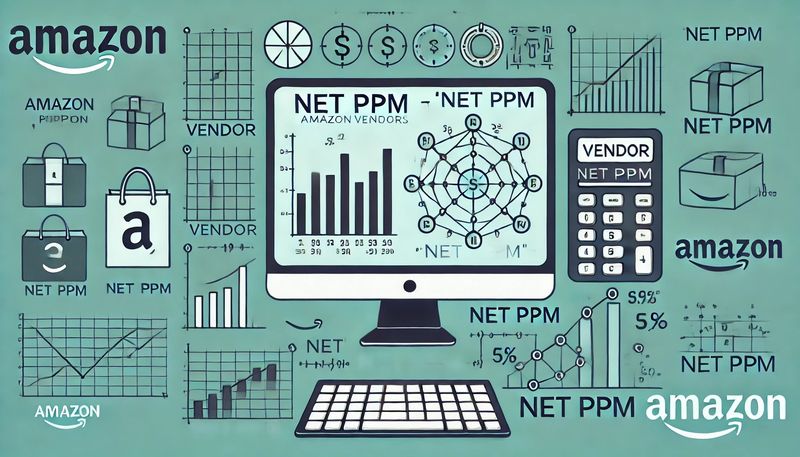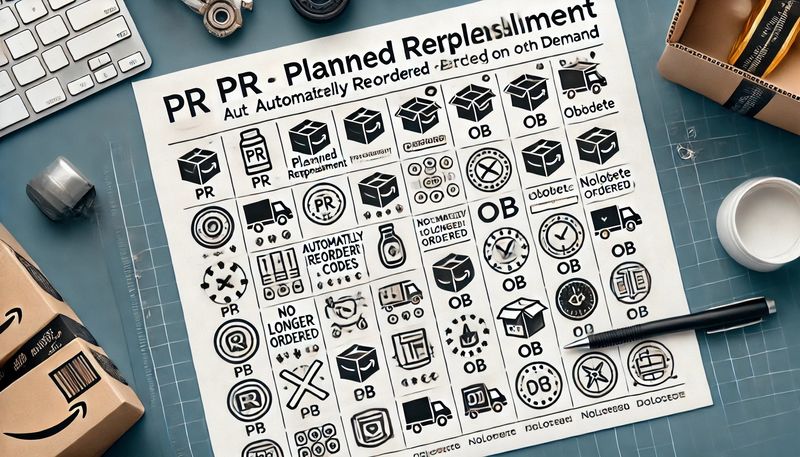- What are the Annual Vendor Negotiations (AVN)?
- Overview of various trade terms
- Overview of the Annual Vendor Negotiations Process
- Conclusion
The beginning of the year is an important time for most vendors on Amazon – it marks the start of the Amazon Annual Vendor Negotiations (AVN), also known as the Joint Business Plan (JBP). During the AVN process, Amazon meets with its vendors to discuss past performance metrics and negotiate trade terms for the upcoming year.
The AVN process is typically divided into three phases: preparation, negotiation, and implementation/evaluation. Vendors should establish their business objectives and negotiation strategies in the preparation phase. In the negotiation phase, vendors should employ their negotiation tactics to secure their best trade terms. In the implementation and evaluation phase, vendors need to ensure successful implementation and monitoring of the negotiated terms.
This article provides an overview of the trade terms commonly negotiated, explains the AVN process in detail, and offers valuable tips on preparing for and conducting successful negotiations.
What are the Annual Vendor Negotiations (AVN)?
The Annual Vendor Negotiations (AVN) involve negotiating trade terms between Amazon as the wholesaler and vendors as suppliers. These negotiations cover prices, conditions, and terms of business. Typically held annually in the early months of the year, the negotiations aim to update the collaboration and ensure mutual benefits.
The AVN process involves an assessment of the past 12 months' performance and establishing trade terms for the following 12 months. The negotiations commence with a kick-off meeting and a series of negotiations. Once an agreement is reached, the negotiation concludes with implementation and monitoring.
Overview of various trade terms
The negotiation terms can be divided into three main categories:
- Fees for Amazon programs and services
- Fees for operational services
- Fees for marketing activities
Fees for Amazon programs and services
Program fees are charges levied by Amazon to vendors to provide various services and programs that are designed to help vendors operate and scale their businesses on Amazon. The fee amount is typically proportional to the usage of the program and may include services such as Amazon Vendor Services (AVS) or the Amazon Vine program.
Fees for operational services
Operational fees are essential to the trade terms between Amazon and vendors. These fees can encompass a variety of costs necessary to operate and scale the business on Amazon. Examples of these fees include product storage and shipping or product photography and description.
Fees for marketing activities
Marketing allowances are fees charged by Amazon to vendors to assist them in promoting their products on the platform. The fees can be utilized for various marketing activities, such as Sponsored Products, Sponsored Brands, Sponsored Display, or advertising on other websites. Vendors can also use the funds for marketing campaigns outside Amazon, such as social media advertising. Amazon offers various marketing allowances, which may differ in scope and requirements. Some examples include seasonal discounts, banner advertising on the Amazon page, free product offers, or couponing.
Overview of the Annual Vendor Negotiations Process
Phase 1: Preparation Phase
The preparation phase of the Amazon Vendor Negotiations is crucial for the success of the negotiations. You should develop a strategy and assess your position with Amazon to achieve the best possible outcomes. We have summarized specific actions that vendors should take during this phase:
- Analysis of the business relationship with Amazon: You should collect and analyze past data to establish a negotiation foundation. This involves understanding and evaluating your performance on Amazon. Analyze your sales figures, advertising initiatives, and other relevant KPIs to determine the success of your collaboration with Amazon. The analysis also helps you understand Amazon's expectations, enabling better negotiation preparation. Since Amazon will provide a growth forecast during the negotiation, it may be useful to create your own growth forecast beforehand and compare it with Amazon's forecast.
- Evaluation of your position: It is important to identify your standing with Amazon to assess negotiation power. Additionally, determine your available budget to plan your negotiation strategy and prepare for various scenarios. The focus is on understanding the advantages and disadvantages of collaborating with Amazon and how to leverage your negotiation power best.
- Simulation of negotiation scenarios: Before the negotiations, you should simulate different developments and negotiation scenarios to be prepared and flexible in responding to various options. The aim is not only to plan for a successful negotiation but also to anticipate potential challenges. Simulating a possible exit strategy from the business relationship may also be worthwhile if no agreement can be reached. This way, you can take the necessary steps in case of failure.
- Identification of KPIs: Set clear goals and Key Performance Indicators (KPIs) to measure and evaluate the success of the negotiations. Amazon typically focuses on financial KPIs such as Cost of Goods Sold (COGS), Net Receipts, Net PPM (Net Product Profit Margin), Lost Buy Box, and Replenishable Out of Stock. These metrics demonstrate the effectiveness and profitability of the collaboration between Amazon and your business. Calculating these costs will help you negotiate your business terms with Amazon confidently. Being prepared with results and data allows you to demonstrate the value of your offering to Amazon and position yourself for the best possible agreement in the interest of both parties.
- Data collection: Gather and prepare your data to present during the negotiations. This includes creating reports and analyses to support your arguments. It is important to know if Amazon has achieved the goals agreed upon in the past 12 months. Additionally, requesting data and statistics from Amazon regarding previous years may be beneficial. Knowing whether a particular brand initiative has been successful will help you decide whether it's worth investing more. For example, make sure Amazon provides you with the necessary information to learn how individual ASINs of your brand performed during promotions or marketing events and whether the promotion or event contributed to growth. These insights will assist you during negotiations and in creating a budget for future promotional activities.
Phase 2: Negotiating with Amazon
Before the actual negotiation, a kick-off meeting is typically held, to which an Amazon manager will invite you. The meeting, led by Amazon, includes:
- an overview of Amazon initiatives and category trends,
- a review of joint performance,
- priorities for the next 12 months, and
- growth goals.
After the initial meeting, your vendor manager will present you with a growth forecast based on key performance indicators (COGS, Net Receipts, Net PPM, Lost Buy Box, and Replenishable Out of Stock). Amazon derives the offers for the trading terms from this growth forecast. Thoroughly review the growth forecast. Amazon focuses on past performance when creating the growth forecast. The growth forecast can be influenced positively or negatively. For example, introducing a promising product can increase growth potential, while delivery difficulties with a popular product can reduce growth. It is important to identify such changes early and raise objections if necessary.
You will exchange many emails with your vendor manager during the negotiation period. You should outline where your company has invested in the joint partnership over the past year, such as increased costs for supplying Amazon. Ideally, express these impacts as a percentage of your Amazon revenue.
It is unlikely that you will agree to Amazon's initial offer, and likewise, Amazon will not agree to your initial counteroffer. Therefore, your initial offer should be unrealistically positive for your benefit. This way, you can subsequently meet in the famous middle ground.
Amazon occasionally has to take action to expedite the annual negotiation process with Amazon. However, it is important to note that penalties can be imposed on your account if you show little commitment or attempt to change the terms retroactively. Therefore, remaining cooperative throughout the negotiation process and maintaining open and constructive communication is advisable. In some cases, however, it may be necessary to provoke escalation to gain the attention of Amazon executives and make faster progress. This can be an effective way to move past detailed discussions that your vendor manager may repeatedly bring up.
Phase 3: Implementation and Evaluation
Phase 3 of the Amazon negotiation process focuses on implementing and evaluating your new trading terms. The first step is to ensure that the new contracts and conditions are implemented correctly and completely. Your vendor manager will send you all the arrangements for confirmation via Vendor Central.
However, before you begin confirming these contracts, some important things must be considered. Firstly, ensure you have received a written overview of the contract structure, including a clear summary of which existing contracts are being modified or terminated. This will ensure that you know what changes are being made and their impact. Secondly, you need to ensure that the contract duration aligns with the time of service provision. If the contract duration is too short, it can lead to difficulties complying with the terms. On the other hand, a contract duration that is too long may mean being tied to terms that may prove disadvantageous.
Finally, it is crucial not to sign anything unless you are 100% clear. If you have any doubts or concerns, discuss them with your vendor manager and, if necessary, seek legal advice. This is the only way to ensure you receive the best possible terms and protect your interests.
Conclusion
In conclusion, the annual Amazon Vendor Negotiations (AVNs) are a process where Amazon meets with a vendor to negotiate new trading terms for the upcoming year. The negotiations focus on various aspects such as program fees, marketing allowances, volume discounts, freight cost reimbursements, etc.
The preparation phase is crucial for developing a strategy and achieving the best possible outcomes. During the negotiations, vendors should keep their goals in mind and be willing to compromise to achieve a win-win situation. Overall, the AVNs provide an important opportunity for vendors to enhance their business relationship with Amazon and scale their brand on the platform.





